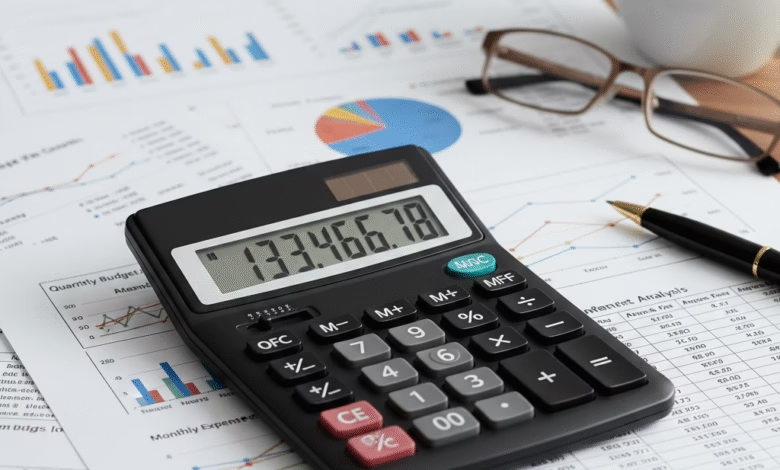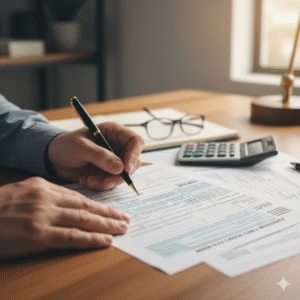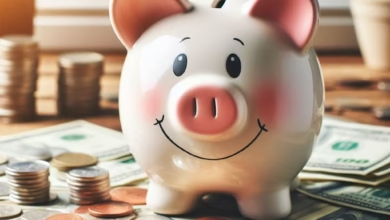
When a successful company generates a mountain of cash, it faces a pleasant but important decision: what to do with all that profit? For decades, the most well-known answer was to pay a dividend—a direct cash payment sent to shareholders as a reward for their investment. But in recent years, another powerful, and often less understood, corporate maneuver has taken center stage: the stock buyback.
Companies like Apple, Google, and Microsoft now spend hundreds of billions of dollars repurchasing their own shares from the open market. But why are they doing this? Is it a sign of strength, a clever form of financial engineering, or something else entirely?
This in-depth guide will demystify the world of stock buybacks, also known as share repurchases. We will explore what they are, the powerful reasons companies use them, and most importantly, how this multi-billion-dollar practice directly impacts you as an investor.
What Is a Stock Buyback? A Simple Explanation

At its core, a stock buyback is exactly what it sounds like: a company buys its own shares on the open market, just like any other investor would. When it does this, the purchased shares are removed from the public pool of available shares, reducing the total number of “shares outstanding.”
Think of it this way: a company is buying back a piece of its own ownership from the public. These repurchased shares are either “retired” (canceled permanently) or held by the company as “treasury stock,” which can be reissued later, perhaps for employee stock option plans or acquisitions.
Companies typically conduct buybacks in one of two ways:
- Open Market Purchases: This is the most common method. The company simply buys its shares on a stock exchange over a period of time, much like any individual or institutional investor. These purchases are subject to certain regulations to prevent market manipulation.
- Tender Offer: A more direct approach where the company offers to buy a specific number of shares from investors at a premium to the current market price. Investors can then “tender,” or offer, their shares for sale at that price.
Regardless of the method, the end result is the same: the company spends its cash to reduce its total share count.
Why Do Companies Buy Back Their Own Stock?
A company doesn’t spend billions of its hard-earned cash without a clear strategic purpose. There are several powerful motivations behind a share repurchase program, ranging from signaling confidence to boosting key financial metrics.
- To Return Capital to Shareholders: First and foremost, a buyback is a way to return profits to the company’s owners (the shareholders). By reducing the number of shares, the company increases the ownership stake of every remaining shareholder without them having to do a thing.
- To Signal Confidence: A large-scale buyback program is often interpreted as a powerful signal from the company’s management. It implicitly says, “We believe our stock is undervalued at its current price. We think the best investment we can make right now is in ourselves.” This can boost investor confidence and attract new buyers.
- To Boost Earnings Per Share (EPS): This is one of the most significant and immediate mathematical effects of a buyback. Earnings Per Share is a widely followed metric calculated by dividing a company’s total profit by its total number of outstanding shares. By reducing the number of shares, the company automatically increases its EPS, even if its profits haven’t changed at all.
- For Tax Efficiency: For many investors, buybacks are a more tax-efficient way to receive value than dividends. A dividend payment is typically taxed as ordinary income in the year it is received. With a buyback, investors only pay capital gains tax on their profits, and only when they choose to sell their shares.
- To Offset Dilution: Companies often issue new shares to employees as part of their compensation through stock options and grants. This practice dilutes the ownership stake of existing shareholders. Buybacks can be used to repurchase a similar number of shares from the market, effectively offsetting this dilution.
The Math of a Buyback: How Fewer Shares Can Mean More Value

The concept of boosting EPS is the engine that drives much of the buyback logic. The best way to understand it is with a simple analogy.
Imagine a company’s total annual profit is a large pizza.
- In Year 1, the company earns a $10 million profit (the pizza). It has 10 million shares outstanding (the pizza is cut into 10 million slices).
- In this case, the Earnings Per Share (EPS) is $1.00 ($10 million profit / 10 million shares). Each slice of the pizza is worth $1.00.
Now, let’s say in Year 2, the company’s profit is exactly the same—still $10 million. But during the year, it used its cash to buy back 2 million of its shares.
- In Year 2, the company still has a $10 million profit (the same size pizza). But now it only has 8 million shares outstanding (the pizza is cut into just 8 million slices).
- The new EPS is now $1.25 ($10 million profit / 8 million shares).
Even though the company’s business didn’t become any more profitable, each individual share is now entitled to a larger piece of the earnings pie. The slices are bigger. This higher EPS makes the stock appear more attractive on a per-share basis and can lead to a higher stock price, as investors are often willing to pay more for a company with higher earnings per share.
How Do Share Repurchases Directly Affect You as an Investor?
The effects of a buyback program can be felt by investors in several ways, some direct and some indirect.
- Potential for a Higher Stock Price: This is the most sought-after effect. Basic supply and demand dictates that if a massive buyer (the company itself) enters the market and reduces the supply of a product (its shares), the price is likely to rise. This, combined with the higher EPS, can be a powerful catalyst for the stock.
- Increased Ownership Stake: As mentioned, when the number of shares decreases, your percentage ownership of the company automatically increases. If you own 100 shares out of 10 million, you own 0.001% of the company. If the company buys back 2 million shares, your same 100 shares now represent 0.00125% of the company—a 25% increase in your ownership stake.
- Tax Advantages: Unlike a dividend, a buyback doesn’t create a taxable event for you. The value is returned by making your existing shares more valuable. You control when you realize that gain and pay taxes on it by deciding when to sell.
The Great Debate: Stock Buybacks vs. Dividends
For decades, companies have weighed the pros and cons of these two primary methods of returning capital. Neither is inherently better, as they serve different purposes and appeal to different types of investors.
| Feature | Stock Buybacks | Dividends |
| Flexibility | High. Companies can start, stop, or adjust buyback programs easily based on market conditions. | Low. Cutting a dividend is seen as a major sign of financial distress and is avoided at all costs. |
| Investor Income | None. Provides no direct cash flow to investors. | Direct. Provides a regular, predictable stream of cash income. |
| Tax Efficiency | High. Taxes are deferred until the investor sells and are at the capital gains rate. | Low. Taxed as income in the year received. |
| Impact on Stock | Aims to increase the stock price and EPS. | Can provide a “yield” that supports the stock price. |
| Investor Type | Appeals to growth-oriented investors. | Appeals to income-oriented investors and retirees. |
The Controversy: Are Stock Buybacks Always a Good Thing?
While buybacks can be a clear benefit to shareholders, they are also one of the most debated topics in modern finance. Critics argue that they can be used to manipulate financial results and may come at the expense of long-term growth.
- Financial Engineering vs. Real Growth: Critics contend that buybacks are a form of “financial engineering.” A company can make its financial results look better (higher EPS) without actually improving its underlying business operations. This can mask slowing revenue or a lack of innovation.
- The Opportunity Cost: The multi-billion-dollar question is: could that money have been used for something better? Instead of buying back stock, a company could have invested in:
- Research & Development (R&D): To create the next generation of innovative products.
- Strategic Acquisitions: To buy a competitor or enter a new market.
- Paying Down Debt: To strengthen its balance sheet.
- Increasing Employee Wages: To attract and retain top talent.
- Poor Market Timing: Ironically, studies have shown that companies are often terrible at timing their own buybacks. They tend to buy back the most stock when their share price is high and confidence is soaring, and they stop buying when their stock is cheap during a market downturn—the exact opposite of the “buy low, sell high” mantra.
- Executive Compensation: A significant portion of executive bonuses is tied to hitting certain EPS targets. Since buybacks are a very effective way to boost EPS, critics argue that they create a perverse incentive for management to prioritize buybacks to enrich themselves, even if it’s not the best long-term use of company capital.
What Should an Investor Think About Buybacks?

Stock buybacks are a powerful and legitimate tool, not an inherently good or bad one. For a financially healthy, mature company that generates more cash than it can effectively reinvest in its own business, returning that excess capital to shareholders via a buyback can be a very smart and efficient move.
However, as an investor, it’s crucial to look at a buyback program with a critical eye. Don’t just celebrate the announcement; ask the right questions:
- Is the company’s stock actually undervalued?
- Is the company sacrificing long-term investment in R&D or growth for a short-term EPS boost?
- Does the company have a lot of debt? Should it be paying that down instead?
Ultimately, a stock buyback is a signal. It tells you how management is thinking about its business and its stock. By understanding the mechanics, the motivations, and the controversies behind this practice, you can better interpret that signal and make more informed decisions for your portfolio.





